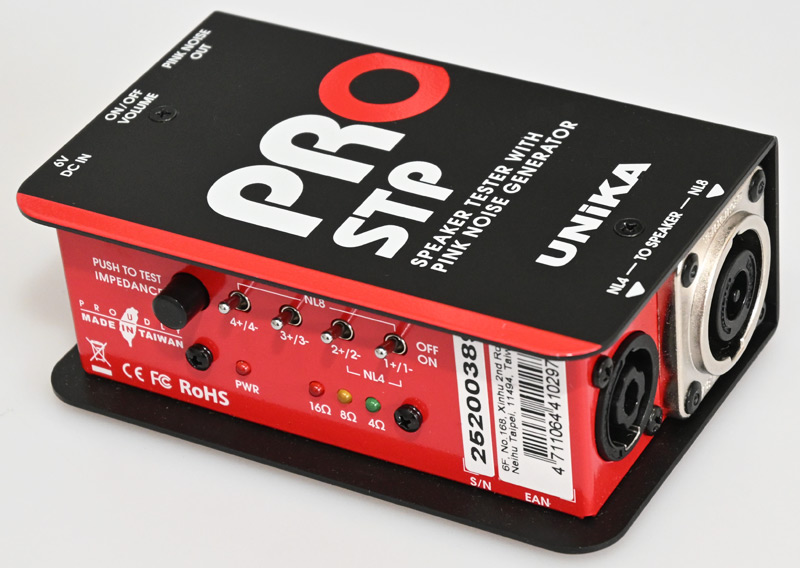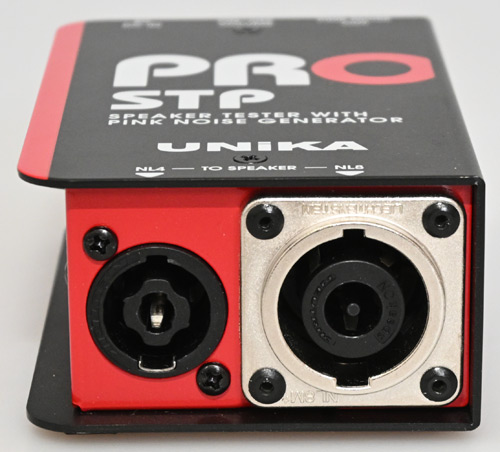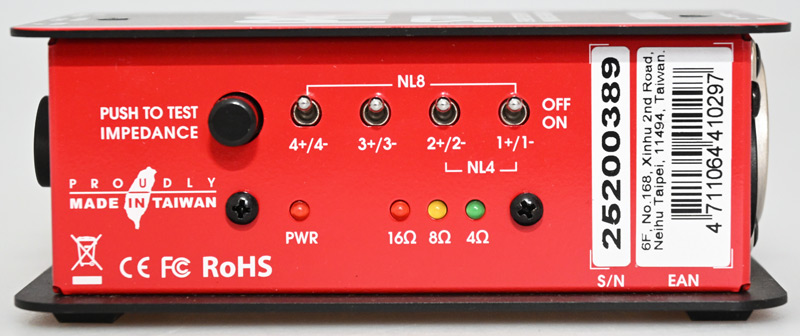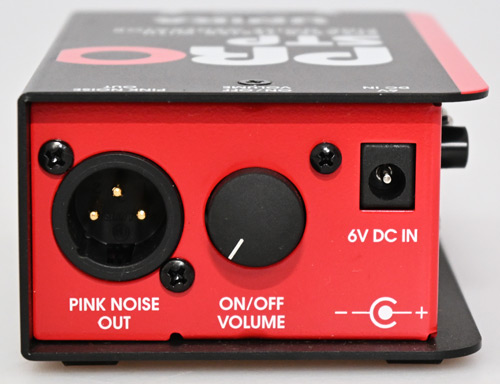UNiKA PRO-STP Loudspeaker Test Tool
Compact pink noise generator with integrated impedance measurement
Author: Christian Boche | Photos: Peter Kaminski and Christian Boche (1)
UNiKA Electronic has developed the PRO-STP, a versatile loudspeaker tester that is ideal for professional use in live sound and installation applications - thanks to its compact design and sophisticated features. The device combines a pink noise generator with precise measurement of impedance, offering a comprehensive solution for the rapid diagnosis of loudspeaker systems.
Concept and design
The PRO-STP is based on a robust, battery-powered design that ensures maximum mobility. The heart of the device is the pink noise generator, which can feed both active and passive speaker systems via various outputs. The integrated impedance measurement works with 5 V DC and enables quick identification of speaker faults even in complex series-parallel configurations.
The design is particularly well thought out for different application scenarios: While the XLR output is designed for active speakers, analog multicores, and mixing consoles, the NL4 and NL8 outputs allow direct connection to passive speaker cabinets. Four switches determine which connections are to be tested.
Technical features
Power is supplied by four AA batteries or alternatively by an external 6-volt power supply (1 A). Neither is included in the scope of delivery. UNiKA explicitly points out that rechargeable batteries should not be used due to their lower voltage.
The pink noise generator has a continuously adjustable potentiometer with an integrated on/off switch. This allows the levels to be optimally adjusted for different speaker types – from subwoofers to midrange drivers to high-frequency drivers. An LED operating indicator provides information about the current status of the device.
The impedance is measured using a momentary push button that applies a DC voltage of 5V to the selected output terminals. Three LED indicators show the measured values:
- Green LED: 1.8 - 3.6 ohms (4-ohm range)
- Yellow LED: 3.6 - 7.2 ohms (8-ohm range)
- Red LED: 7.2 - 14.4 ohms (16-ohm range)
Design and quality
The PRO-STP's housing makes a solid, professional impression and should easily withstand even the toughest touring conditions. The connections are cleanly finished - and the high-quality NL4 and NL8 Speakon sockets deserve special mention. The XLR output is designed as an XLR-M socket.
The controls are clearly arranged and labeled in a self-explanatory manner. The four switches for the Speakon outputs allow quick channel selection without the need to reconnect cables. Unfortunately, the battery compartment cannot be opened without tools, but a Phillips screwdriver is required. Four AA batteries are required for operation. These should allow up to twenty hours of continuous operation.
Speaker diagnosis with pink noise
The pink noise generator proves itself to be an extremely practical tool for testing the functionality of speaker systems. The even energy distribution across the entire frequency spectrum allows the rapid identification of defects such as faulty drivers, damaged crossovers, or cable breaks. The advantage over sine tone generators is particularly evident in multi-way systems, as all frequency ranges are excited simultaneously. The stepless level control allows a gentle approach: starting with low levels, even sensitive high-frequency drivers can be safely tested without damaging them. For powerful systems, the level can be increased accordingly.
Impedance measurement and polarity check
The 5-volt DC voltage measurement provides a quick overview of the actual impedance of connected speakers. This function is particularly valuable for complex speaker arrays in which several chassis are connected in series or parallel. Deviations from the expected values indicate defective drivers or wiring errors. The polarity check is performed visually by observing the membrane deflection when the button is pressed. If the polarity is correct, all membranes move in the same direction. This function is particularly valuable when installing larger systems.
Practical experience at a rock festival
The PRO-STP proved itself as a reliable diagnostic tool during testing at a festival. The author was part of the stage and monitor crew and was on site several hours before the first artists arrived. This gave us the opportunity to carry out some tests with the UNiKA STP right away. Because the stage had already been in operation for several days, we first tested all d&b M4 stage monitors with the UNiKA STP to ensure that they were functioning properly. The M4 monitors can be operated both passively and as two-way active monitors with d&b system amplifiers. The woofers and high-frequency drivers can be separately addressed using a combination of UNiKA STP, an NL4 loudspeaker cable, and directly connecting a monitor. The woofer is switched to 1+/- while the high-frequency driver is connected to 2+/-. The toggle switches on the PRO-STP allow the drivers to be supplied separately or together with a test signal. This allows the respective low-, mid-, and high-frequency ranges to be independently checked of each other in bi- or tri-amping setups.
Thus, ten existing monitors were tested quickly and reliably in just a few minutes. Speaking of reliability: A large number of STA subcores from “connex” were used as subdistributors. The author noticed that with one stage monitor, significantly less level reached the festival splitter on two channels. This was noticed when the XLR pink noise output of the UNiKA PRO-STP was used to test all available stage monitors. The stage monitor was replaced without further ado. Therefore, having the candidate on hand at the construction site was worthwhile. The UNiKA loudspeaker tester's extremely simple handling pays off, especially in hectic live situations. It also produces clear test results, which ultimately saves time by eliminating the need for troubleshooting. The battery operation has also proven to be practical, as no external power supply is required.
Limitations and notes
The manufacturer points out that longer cable runs can influence the measurement of impedance. For precise results, connections should therefore be as short as possible and sufficiently dimensioned speaker cables should be used. The maximum cable thickness for NL4 and NL8 is 12 AWG (3.3 mm²), special versions also support 10 AWG (5.2 mm²).
Caution is advised when using with compression drivers and high frequency drivers, although the device does have a current limit. As with any battery measurement, you should proceed with caution regarding the test signal volume. In a quiet environment, setting the volume potentiometer to the 11 o'clock position is usually sufficient. During stage operation, higher levels are of course required for evaluation, but the UNiKA PRO-STP can also provide these if necessary.
Conclusion
The UNiKA PRO-STP is a well-designed and practical solution for professional loudspeaker diagnostics. The combination of a pink noise generator and impedance measurement in a compact, battery-powered housing makes it an ideal tool for live sound engineers, installation companies, and service personnel. The versatile connection options, robust construction, and intuitive operation are particularly noteworthy. While simple multimeters only provide static resistance values, the PRO-STP enables comprehensive functional testing under realistic conditions.
The PRO-STP is a worthwhile investment for anyone who regularly maintains and commissions loudspeaker systems. The time saved in troubleshooting and the ability to identify problems before the sound check definitely justify the purchase. The only downside is the hefty price tag. With a list price of around 570 euro, UNiKA is targeting professional technicians and event service providers.
 How to resolve AdBlock issue?
How to resolve AdBlock issue? 



